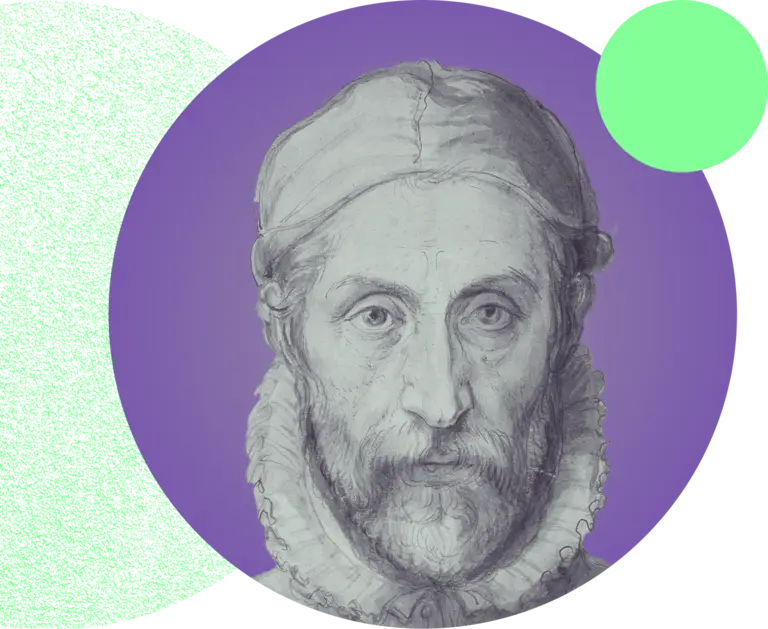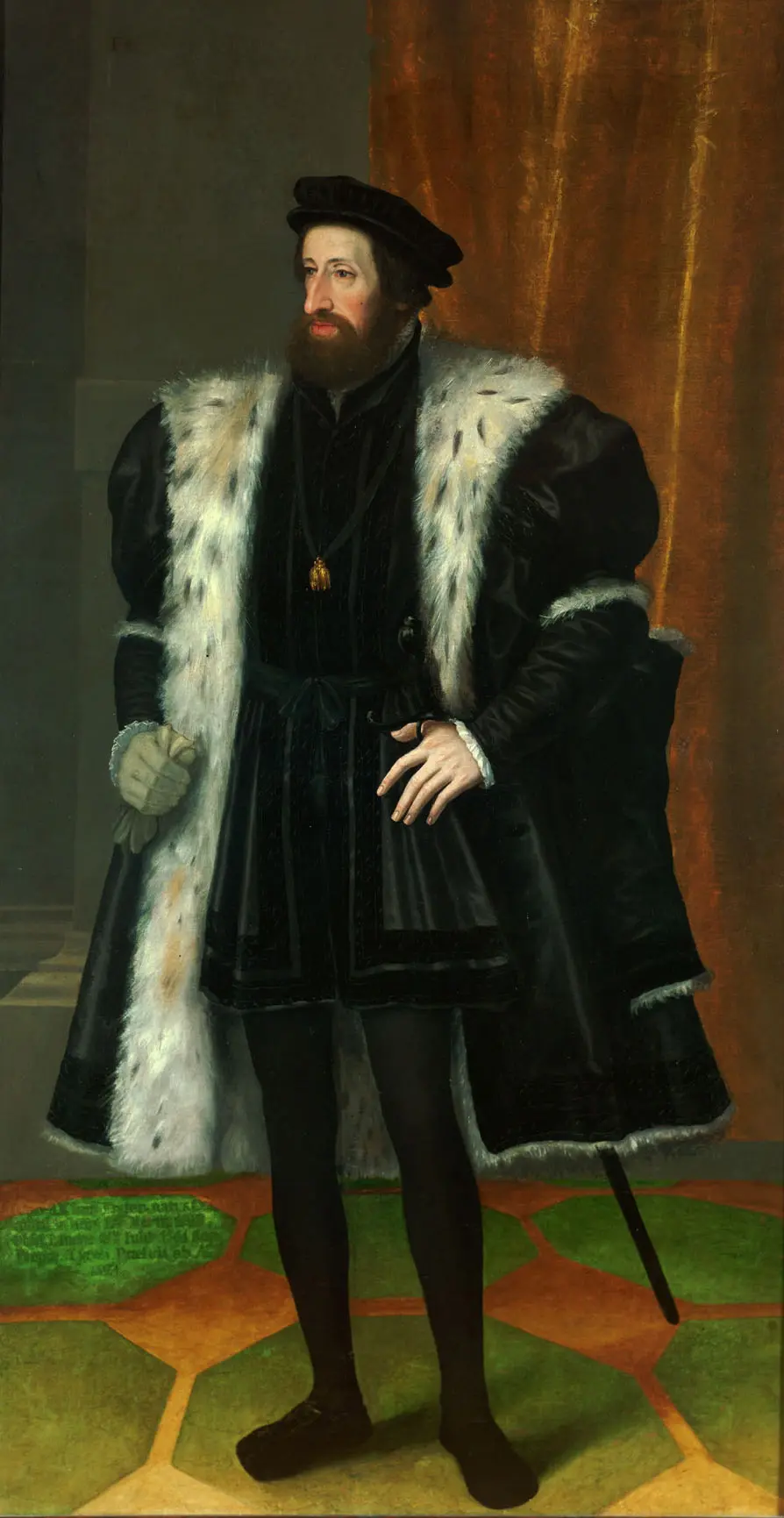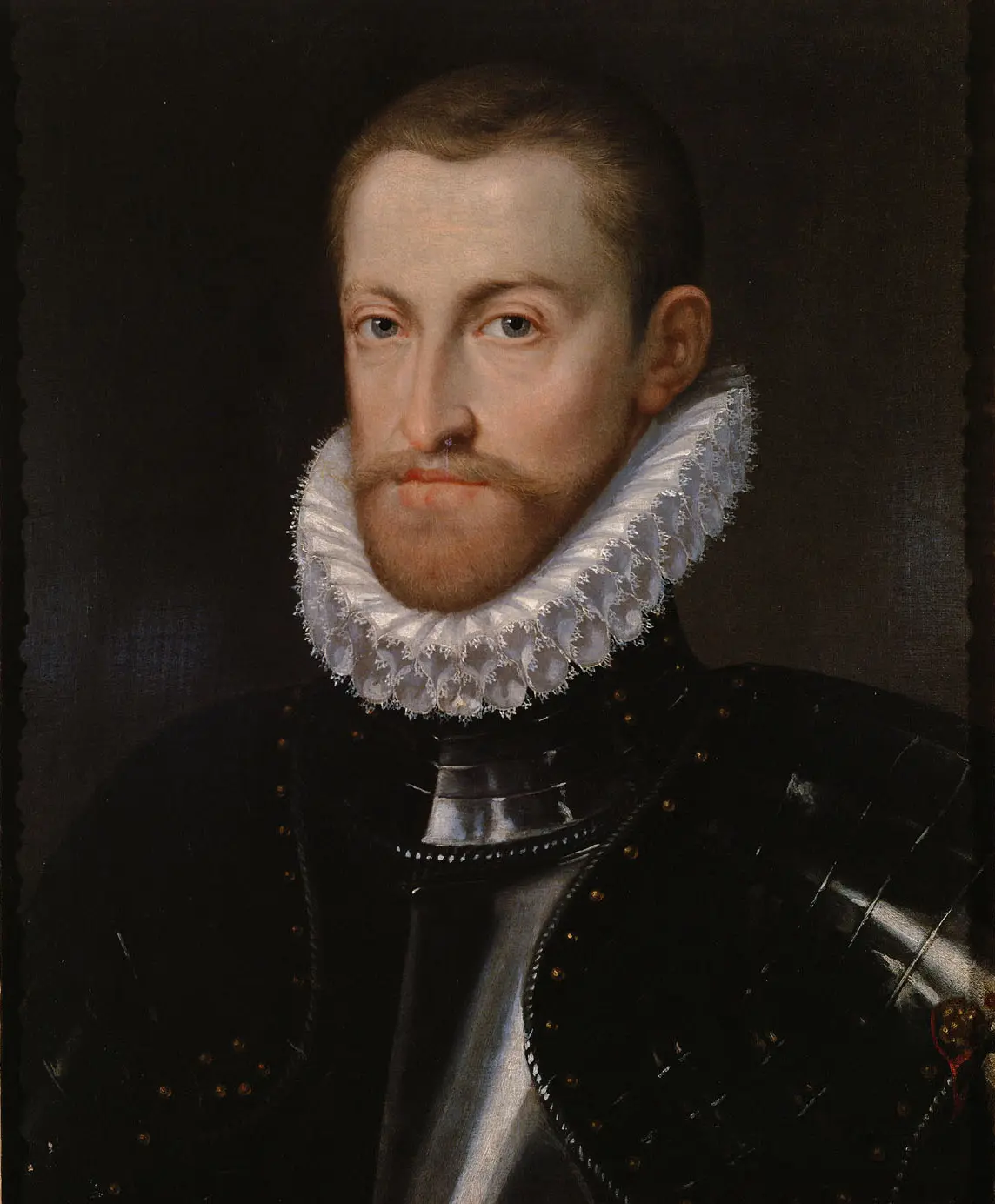Born: 1526, Milan
Died: July 11, 1593, Milan
Guiseppe Arcimboldo in our online collection

Born: 1526, Milan
Died: July 11, 1593, Milan
Guiseppe Arcimboldo in our online collection
Giuseppe Arcimboldo was probably born in Milan in 1526.
He was first mentioned in 1549, when he worked with his father Biagio on Milan Cathedral, for which he designed various decorations. Although his early work is poorly documented, his talent as a draftsman and painter likely earned him recognition soon, so that he was appointed to the Habsburg court of Emperor Ferdinand I in Vienna in 1562.
Festive
As court artist to the Habsburgs, Arcimboldo initially received commissions for portraits of the imperial family. Later, he also worked for Maximilian II and Rudolf II as a designer of imperial spectacles and festivities. Lavish celebrations, masquerades, theatrical performances, and tournaments were not only a source of entertainment but also served as political stagecraft, impressively showcasing the Habsburgs’ power, wealth, and worldview. Surviving works by Arcimboldo include designs for elaborate sleds, masks, and costumes.
Grotesque heads
From 1563 onward, Arcimboldo created the so-called teste composte for the Habsburgs – grotesque heads composed of animals, plants, or objects. These are allegorical representations reflecting the era’s fascination with the natural sciences and symbolic imagery. Arcimboldo was inspired by the nature studies of Leonardo da Vinci. He was able to study a wide variety of plant and animal species in the Habsburgs’ botanical and zoological gardens.
In 1563, he painted the Seasons for Emperor Maximilian II, and by 1566 had complemented them with the companion series The Four Elements.

Emperor Ferdinand I, Johann Bocksberger d. Ä., mid-16th c.
Von der Serie der „Vier Elemente“ befinden sich zwei Gemälde im KHM. Sie sind im Zusammenhang mit dem zuvor entstandenen Jahreszeiten-Zyklus Arcimboldos zu deuten: Der „Winter“ (Inv.-Nr. 1590) entspricht dem „Wasser“, der „Sommer“ (Inv.-Nr. 1589) dem „Feuer“ (Inv.-Nr. 1585), der „Frühling“ der „Luft“ und der „Herbst“ der „Erde“. Das Krönchen ist hier ein versteckter Hinweis auf den Kaiser und damit auf den Auftraggeber.
Arcimboldo war seit 1562 kaiserlicher Hofmaler in Wien und Prag. Neben der Tätigkeit als Porträtist wurden vor allem seine Arbeiten als Regisseur und Ausstatter höfischer Turniere und Hochzeitsfeierlichkeiten gerühmt. 1563 aber entstand eine Serie von Jahreszeitenbildern, auf deren Einzigartigkeit sich der Nachruhm des Malers gründet. Aus Pflanzen(teilen) zusammengesetzt, zeigt der „Sommer“ an keiner Stelle die Oberfläche eines natürlichen Gesichtes. Signatur und Datierung sind raffiniert in das Stroh eingewoben.
Von der Serie der "Vier Elemente" befinden sich zwei Gemälde im KHM. Sie sind im Zusammenhang mit dem zuvor entstandenen Jahreszeiten-Zyklus Arcimboldos zu deuten: Der "Sommer" (Inv.-Nr. GG_1589) entspricht dem "Feuer", der "Winter" (Inv.-Nr. GG_1590) dem "Wasser" (Inv.-Nr. GG_1586), der "Frühling" der "Luft" und der "Herbst" der "Erde". Das "Feuer" mit der Ordenskette vom goldenen Vlies und dem Doppeladler-Medaillon spielt dabei im Vergleich am deutlichsten auf Kaiser Maximilian II. an.
When Emperor Rudolf II ascended the throne in 1576, he moved the centre of the Habsburg Empire from Vienna to Prague. The emperor gathered artists, scientists, and alchemists there – including Johannes Kepler, Tycho Brahe, Edward Kelley, and John Dee.
Arcimboldo's works, with their diverse associations, fitted well into the intellectual milieu of the Prague court. His reversible paintings, at first glance simple still lifes, also date from this period. When turned 180 degrees, grotesque heads appear in them. Themes such as illusion and transformation were at the heart of Arcimboldo’s artistic interests.
Farewell with honours
Although Arcimboldo held a prominent position at the imperial court in Prague, he asked the emperor for permission to return to Milan. In 1587, Rudolf II finally granted his request. Arcimboldo remained in Milan until his death in 1593, but he stayed in contact with the Prague court. Among other works, he sent two composite portraits of the goddess Flora as well as the famous painting Vertumnus (1591) to Rudolf II, celebrating the emperor as the god of the seasons and of transformation. A year later, the emperor even conferred a noble title on him – an extraordinary honour for an artist!

Kaiser Rudolf II. (1552-1612) im Harnisch, Bruststück, Martino Rota, um 1576/80